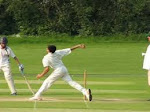I have pulled together a spreadsheet summarising income and costs for the 18 first class counties. Data is taken from the most recent financial statements, with the exception of Surrey who have just filed their financial statements for the period to 31 January 2017, I'll update this post once I have a copy of these Surrey accounts. Middlesex don't seemed to have filed accounts for the period to 31 December 2016, although I think these are now overdue. A few points on the aggregate figures. The 18 first class counties made a combined loss before tax for the period of £2.6m. Viewed in isolation this doesn't look too bad but it includes a Surrey profit of £3m. Also most counties have taken on a significant amount of debt in the last decade. For the counties making a loss / small profit the issue is are they able to pay off the debt as it falls due. A particularly pertinent question for Durham, Glamorgan (both of whom have almost gone belly up in the last two year
